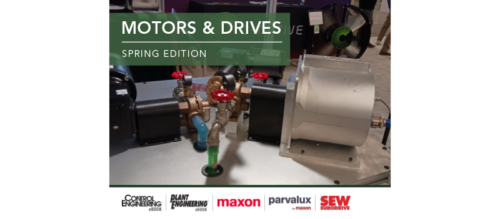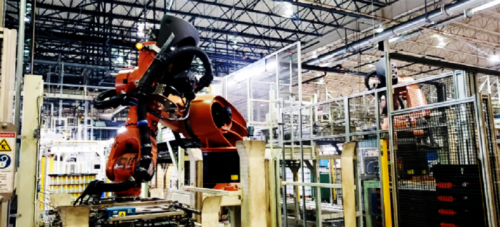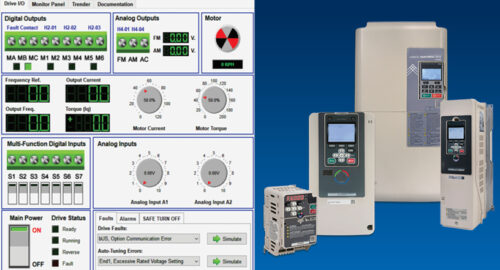Getting energy efficiency “a seat at the table”
Energy efficiency is a hot topic for plant managers, but affecting change in energy policies at the plant level isn’t always easy.
Energy efficiency is a hot topic for plant managers, but affecting change in energy policies at the plant level isn’t always easy. Panelists at the Manufactuirng Summit: Fred C. Schoeneborn of FCS Consulting Services, John Malinowski of Baldor, Bob Baker of Atlas Copco Compressors and John L. Blumenshine of S&C Electric — all agree that the hardest part of any successful energy conservation plan is getting the attention of management in terms they can understand:
VAVRA: I think the only question I have after hearing all of them is, we’ve managed to save about 900% of costs today.You can actually pay people to take your products off of your hands if we do all of this energy savings. So, the simple question is, why isn’t everybody doing this?What are the key impediments to keep this from happening within manufacturing facilities?Because it seems like a no-brainer.
SCHOENEBORN: Technical people have a bias against marketing, okay? They believe that people should be smart enough to really understand it. I just worked with a company that had a prize in a plant where they spent $500 million at the plant in energy, and not one person was managing it because we all manage energy, right?You know what that means.Nobody is managing it.
So what I’m saying to you is, the case is not made in a marketing fashion; what’s in it for senior management.Why should you be doing it?If you have got a $500 million nut at this plant, you should be managing your energy.Unfortunately, not enough people do that kind of selling.At Mobil, I had a 5% (energy) reduction goal. I said to management, “There’s $25 million of new money in this for you every year if you let me start the program.”So that was a selling approach that I used.
I believe that is one of the real issues, that management has so many things on their mind.And I used to report to the chairman of Mobil.I have an understanding of the level that these folks work with. They have so much going on.If you don’t make the point in your face, this is what it’s all about, you’re never going to get ahead and get a seat at the table.
VAVRA: Bob, John — you guys both go out, preaching this mantra to your customers.It’s not just from a product selling standpoint.It’s, “I can help you do things better in your facility. Is it easier to deliver that message now, than it was two or three years ago?
BAKER: It’s getting easier. It’s getting easier because of all the publicity that we’re getting about energy costs. I make it as simple as I can because as simple as air compressors are, it’s a very involved process to find out where the energy savings are.But if I’m going to do an audit, if I’m going to charge somebody $10,000 or $15,000, they find that that’s a lot of money.If I explain, well, there’s going to be a payback to this, that’s almost what we have to do, but it’s a constant.Just like car maintenance, — you’re looking at spark plugs, keeping it clean, changing the oil.Just simple things like that are all energy efficiency things that you need to do.
So an energy management group, if you can get that or get the companies to buy into that, that’s key.
VAVRA: So it’s a process from both sides, both the products that are necessary to help drive some of these savings, as well as being able to prove the cost savings incentives on the back side, which go right to the bottom line of the manufacturers?
BLUMENSHINE: To play out that real quick, and I hate to criticize my own profession, but the biggest problem is, we don’t, as plant engineers, take advantage of things when they are there.Yes, our government needs to do more.But there are rebate programs and all kinds of opportunities out there that people don’t pay attention to.
It is my opinion that the plant engineer’s responsibility is to make the leadership of his company aware of everything as it associates with energy and maintenance and whatever, and it’s not somebody else’s job to tell him.Too many times, I think the plant engineer — he’s just oblivious to it.Until some vendor or supplier comes in and turns him onto a new technology or a new whatever, then, all of a sudden, “Oh, yeah!”
But I think there’s been a lot of opportunity go by the wayside.I know Commonwealth Edison had a lighting rebate program for several years, and they had money in the bank, that nobody used it. They couldn’t get people to pay attention to it.
BAKER: Going to the subject that we talked about, how to get people to buy into this, I think I remember the numbers.If we run a motor for 20 years, it was $58,000. So you just round it up to $60,000 over a 20-year period, which sounds like a lot of money to me.But when I asked John, he’s spending $8 million in electricity, not so much John, but upper management, that’s a drop in the bucket.
So what the Compressed Air Challenge has done, we’re developing these other programs for shop floor audits that people can do themselves.Weyerhaeuser is very involved in it, Ford Motor Company, and you can get that off the free Website.
But the key here, and what’s been discussed over the last day and-a-half, is that they’re getting the floor people involved.You don’t need improvement to do a $12,000 or a $20,000 audit for your plant. You just need to go out and buy a couple of ball caps and jerseys, that when someone finds a way to save energy, all of a sudden, they are part of it.
And then, you need to get your production people involved in that.Teams are always a good way because it creates a little competitive function there.But then, that $60,000 is a heck of a lot to that gentleman on the line who is making $15 an hour. So bring it down to the floor.
SCHOENEBORN: Right.There’s also one point that I learned, that I stole this idea from somebody, you need to convert your savings into the language of the company, okay?Because if you’re purely talking dollars — or, worse, Btu’s, which nobody understands anyway — management doesn’t want to hear that.
But if you can convert your savings into what the real language of a company is — and at Mobil, the language was gallons sold.If you can convert your savings into how many gallons of gasoline Mobil would have to sell in order to make that same profit that I was able to make as part of the energy program, then you’re going to get — in my case, the first time, I’d say $15 million.That was big money to me.
BLUMENSHINE: And that goes straight to the bottom line.
SCHOENEBORN: That goes straight to the bottom line, exactly, and there’s no questions asked.I mean, this is certain money.
And this is 1995, where we had a 3-cent per gallon pure profit.Somebody said, “Fred, why don’t you convert it?”So we had to sell 32 gallons of gasoline to make one buck.So I then took my $15 million times 32, and all of a sudden, I had 540 million gallons of gasoline that Mobil would have to sell to equate the program. That was something that resonated within the company all of a sudden.
I’ve taught Ford the same thing, how many F150 do they have to sell to equate to the energy programs, and that’s a great tool.
BAKER: What you’re bringing up is very important when we look at an energy audit.We try to get it into dollars per CFM, and that has ranged anywhere from $70 up to $350 per CFM, depending on how inefficient the person’s facility was.
But if you can relate that to, again, to the demand side, when you look at your electric bill, and it says it’s 8 cents a kilowatt hour and when you look at their total bill, we get something we call a blended cost, where you look at all of the costs, demand charges, everything, and just take that number of kilowatts used divided by the dollar value on the bottom of the bill, and you find out that it was 11 cents a kW that they were paying.
So in those issues or like that, where someone is inappropriately using air and starting a 1,000-horsepower air compressor probably to blow a few chips off of his machine.
MALINOWSKI: For the magnitude of the energy we’re talking about here, in industrial, electric motor-driven systems, that represents 25% of all the electricity that we use in North America. If you drill down into industry, electric motor-driven systems are two-thirds or more. In some industries, 75% of their energy costs goes to electric motors.
So that’s sort of the heart of the whole system.All of these other compressors and pumps and HVAC, they’re all driven by that electric motor.It’s something that’s easy to fix, but it’s hard to get the project started.
SCHOENEBORN: I also believe that the items we talk about, the steam traps, motors, compressed air, those are all the not-so-sexy items of a plant, okay? These are the maintenance folks who handle that type of stuff.The real fun stuff in a plant is product out the door because that’s what a plant manager gets evaluated on, that’s what the bonuses are based on, that’s what the stock options are based on, product out the door.As far as whether your compressed air system works or steam traps or a motor, I mean, if a motor fails, what do they do? They worry about whether a bolt pad matches or the shaft line is up, end of story. Nothing else matters.
So what I’m saying is, until the utility folks at a plant or the energy folks at a plant really get the same respect as the process improvement people — because if it’s a war between money for process improvement versus energy efficiency — I can tell you who is going to win every time.So that’s the one real bias that occurs at a plant that I’ve noticed.
VAVRA: Is that shifting at all?
SCHOENEBORN: Not in this country. I haven’t seen it.
BAKER: We’re trying.
VAVRA: It’s hard to turn the Titanic, I know.
SCHOENEBORN: In Europe, yes, I see it.In Europe, I see it more.I don’t see it here yet, and I’ve done assessments all over the world.
It’s a very tough thing because, again, the maintenance folks don’t have a seat at the table.An energy person normally is somebody that’s just been appointed.”Hey, you know, you’re good with people.Why don’t we give you energy,” you know, type of thing.So, unfortunately, that’s how it works.
Do you have experience and expertise with the topics mentioned in this content? You should consider contributing to our CFE Media editorial team and getting the recognition you and your company deserve. Click here to start this process.





